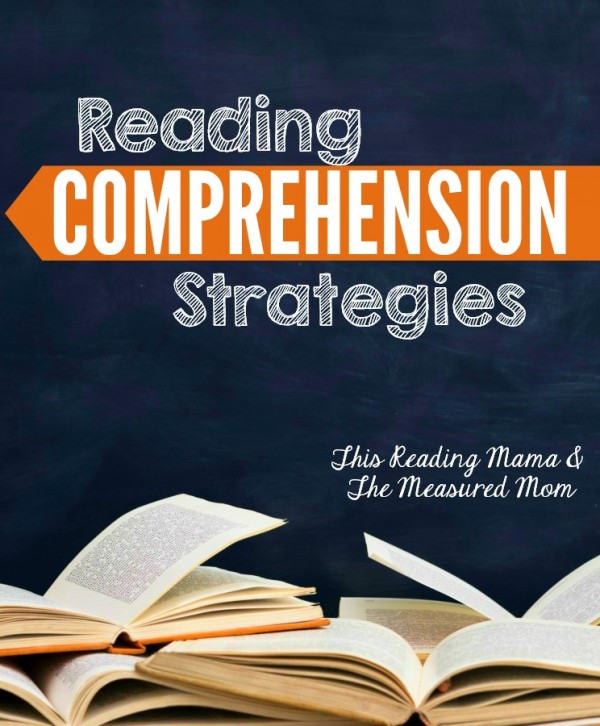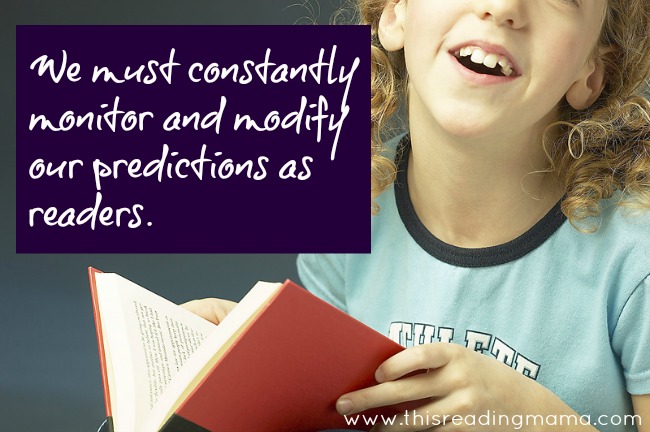Some readers can read with such beautiful expression and accuracy. It is absolutely breath-taking! But as the reader is asked questions about the text, he replies with, “I don’t know” or “I don’t remember”. Many times when readers struggle to answer questions, they are simply lacking some comprehension strategies needed to help them think about what they are reading.
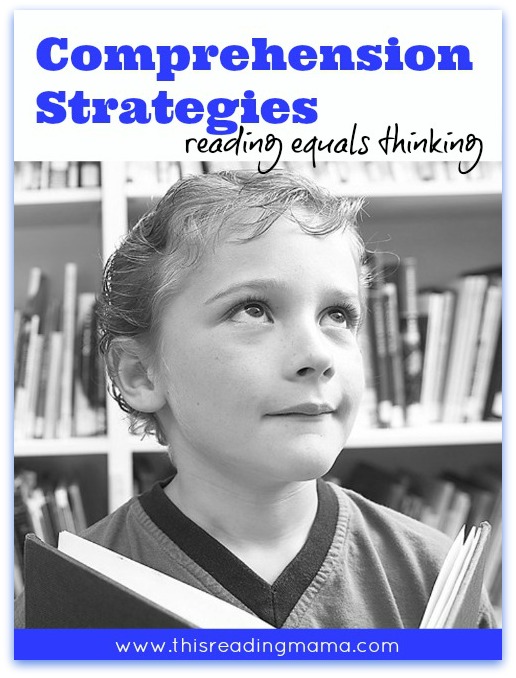
I am sharing seven common comprehensions strategies below. But please note that even though I list them separately, we actually integrate them when we read. As adults, we use multiple strategies without even knowing it many times. But for young and inexperienced readers, we need to model them explicitly so that they can eventually apply them as they read independently.
I find it works best to focus on one strategy and move on to the next once when you notice your child has mastered it. By “master”, I mean that your child is taking the things you’ve modeled for her and now independently applying them to texts that she reads.
*This post contains affiliate links.
You can see how to do this with the practical lessons featured in our Reading Comprehension Strategies Series.
Making Connections
Good readers make connections when they read. It might sound like, “Oh that’s happened to me before…” or “I felt the same exact way when…”
It is important that young readers not only make connections, but that the connections they make are meaningful. Meaningful connections are those that connect to the bigger ideas (the main idea, the lesson being taught, the plot) in the story.
For example, the fact that the main character in the book has her bedroom walls painted the same color as your child’s does not make for a meaningful connection. But if the character in the book is disappointed about something, your child could think back to a time when he was disappointed. By doing this, he can relate to how the character feels as well as predict what he thinks the character might do about it.
There are three different kinds of meaningful connections kids can make:
1. Text-to-Self Connections
When your child reads, you want him to think about how it reminds him of something he’s done or something he knows (his schema). A good connection will help him understand the text better. As he is reading, help him share those connections out loud and be willing to share your own connections as you read together.
A good text-to-self connection might sound like…
- This reminds me of the time that I…
- I know exactly how the character feels because when that happened to me…
- Remember when…
- Because I know about ______, I can understand _______.
2. Text-to-Text
Sometimes we are able to use knowledge about another book to aid us in comprehending our current text. We might notice this especially when we read book series or books by the same author. The style or the story line makes the book more predictable and easier to comprehend.
A good text-to-text connection might sound like…
- This character reminds me of the character in this book because…
- The part reminds me of the book I read yesterday…
- I think the book will end this way because in this other book…
3. Text-to-World
Things we read can remind us of events happening in our world. It might be something from history, something currently happening in our church/schools, or in our community. Kids can use that knowledge and apply it to help them comprehend the texts they read.
A good text-to-world connection might sound like…
- This reminds me of something I heard on the news…
- I think this has happened in history before…
- It seems like this book happened a long time ago because…
- This is the same problem we’re facing right now in the United States {insert country you live in}…
Making Predictions
Predicting is probably the most familiar of all the comprehension strategies. It is actually a rather complicated strategy because it requires readers to use the clues the author gives them, tap into their own prior knowledge (making connections), and make an educated guess as to what might happen next.Many times our predictions are not correct and we are constantly monitoring and modifying our predictions as we read on. When kids make predictions, probing with further questions is a great idea. “Why did you predict that?” or “What’s the thinking behind your prediction?” This helps you to see their thinking and label their strategy for predicting.
Child’s answer: “Well, I guessed she would do that because when that happened to me, I did that.”
Mama: “So you just made a text-to-self connection. You thought about a time when it happened to you and you used that prior knowledge to predict. That’s exactly what good readers do! Awesome job!”
Making Inferences
Inferring could simply be defined as “reading between the lines”. It’s what the reader can guess is going on, even if the author doesn’t spell it out. Readers may have to infer the setting of the book, characters’ feelings, the lesson or moral of the story, or the author’s purpose. I personally think kids are great at inferring in real life. I’m just keeping it real here–when I am in a bad mood, my kids can infer that quicker than anyone else and they start pushing my buttons to get a reaction. Do I hear an “Amen!”? If I could only bottle up their inferences and sell it!
Asking Questions
A good question begs an answer. One of the things that good readers do is ask themselves questions as they read. This makes them want to keep reading to find the answer. When modeling this comprehension strategy, I explicitly talk about what makes a good question.
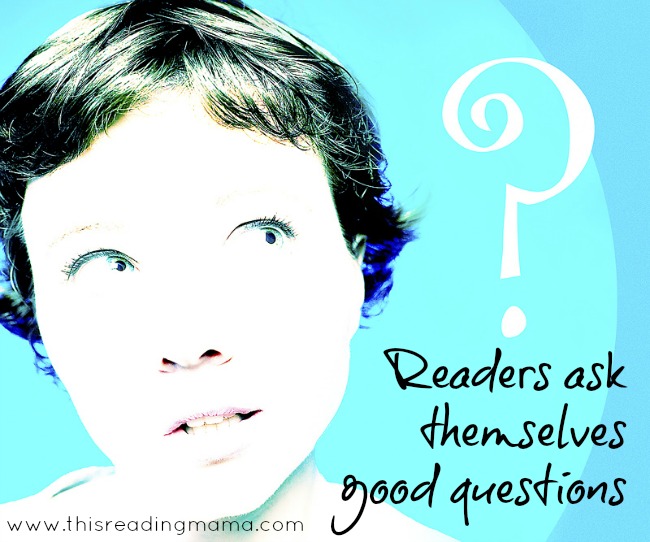
Good Questions:
- You don’t already know the answer
- You really do wonder about it
- The answer might require further research because it may not be answered in the text
- Make us want to keep reading to find the answer
Not-so-Good Questions:
- The answer is obvious or you already know the answer
- You don’t need to keep reading to figure out the answer
Making Mental Images
I’ve heard so many people say, “I’m a visual learner.” The fact is, many people are-including our own kids! I think out of all the comprehension strategies, this one is my favorite. I loved reading a chapter book to my Kindergarten class and asking them to close their eyes and describe what they saw in their little heads. To me, visualizing makes the text come to life.
Visualizing helps kids to experience the text in ways that make it personal to them. No two people will hear the same text and envision it the same way. Visualizing also helps readers remember what they’ve read because it attaches a vivid picture to the written word. Mental images can change as we read through the text (much like our predictions can change), creating a “movie in the mind”.
Imagery and Figurative Language: Sub-Categories of Making Mental Images
When I explain imagery to kids, I tell them it’s how an author uses words or phrases to help us not only see what we are reading, but hear, feel, taste, or smell it. Imagery is accomplished best when an author shows instead of tells the reader something. For example, “the rain played a song on my umbrella” helps the reader to hear the rain falling. The author could have told the reader by saying, “the rain fell on my umbrella”, but he chooses to show it by appealing to our sense of hearing.
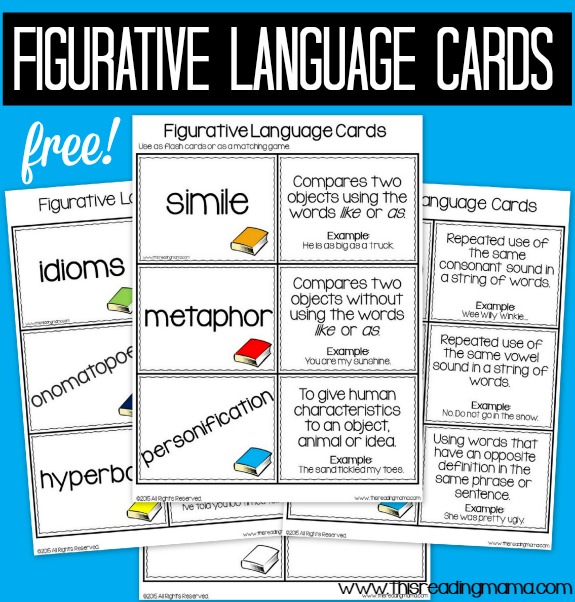 Within the study of imagery, I like to also study figurative language. Figurative language includes imagery, metaphors, similes, personification, hyperboles, etc. All those things we’ve forgotten since high school! My goal with figurative language is that the reader would not only to be able to spot it, but be able to critique it as well. For example, I want to equip the reader to explain why comparing a beetle to a shiny, well waxed car would be an appropriate metaphor. I want him to be able to think of other appropriate metaphors as well. As the reader is exposed to different texts, I want him to think critically about how the author uses words to portray a message to the reader.
Within the study of imagery, I like to also study figurative language. Figurative language includes imagery, metaphors, similes, personification, hyperboles, etc. All those things we’ve forgotten since high school! My goal with figurative language is that the reader would not only to be able to spot it, but be able to critique it as well. For example, I want to equip the reader to explain why comparing a beetle to a shiny, well waxed car would be an appropriate metaphor. I want him to be able to think of other appropriate metaphors as well. As the reader is exposed to different texts, I want him to think critically about how the author uses words to portray a message to the reader.
Determining Importance
It is vital for readers to be able to decipher important information from the not-so-important information when reading a text. Have you ever asked a child to recap a story and they begin to tell you every single detail? So, how do kids decide what is and isn’t important?
In general, fiction tends to be easier for young readers to figure out what is important because the text structure or story line is more familiar. Don’t get me wrong, determining importance within fiction can be a struggle for some children. And I hope that you’ll take a look at the fiction text structure section to give you a few more ideas if this is hard for your child to understand.
Non-fiction is where many readers (even good ones) begin to get confused on determining what is important in text. It seems that the author throws loads of information to the reader and it’s up to the reader to figure out what to make of it. It’s up to the reader to figure out not only what is important, but what is not important. Understanding the different nonfiction text features and structures is a big part of the solution.
Synthesizing
When good readers read, their thinking grows as they progress through the text. They might initially think one thing as they begin reading and their initial thoughts are sometimes challenged or added to later in the text. Debbie Miller likens it to throwing a rock into a pond: “first there’s the splash, and then the water ripples out, making little waves that get bigger and bigger…as you read, your thinking evolves and the meaning gets bigger and bigger…” (Reading with Meaning , pg. 159)
The way that good readers predict works much this way. A child may predict something based off the title or the picture on the front cover, but as the story unfolds, her prediction is revealed to be off-base. If she’s a good reader, she will recognize this and change her prediction to one that makes more sense with the new information she has read. If she tries to hold on to her original prediction, even when faced with new information, the text will probably become difficult for her to comprehend.
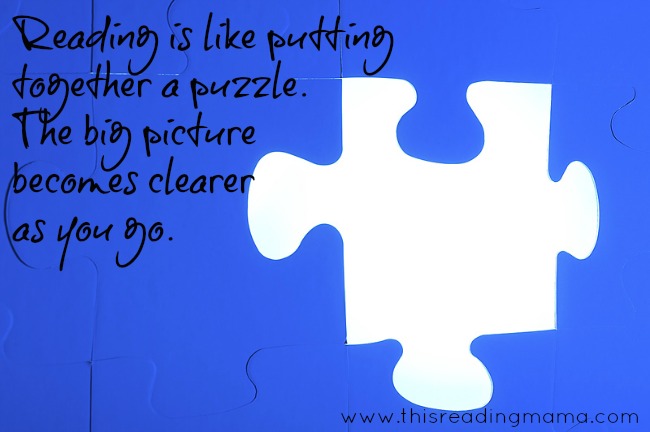
I think what little Cory says in D. Miller’s book wraps up synthesizing rather well. “Synthesizing is like putting a puzzle together. You have to sort out your thinking and put it in the right place.”
More Resources for Teaching Comprehension
Follow This Reading Mama’s board Comprehension Strategies on Pinterest.
- Reading Comprehension Strategies Series {10 weeks of hands-on lessons!}
- Before They Read: Supporting Comprehension and Fluency Before Reading
- Reading Comprehension Strategies {Fix-Up Strategies}
- 5 Simple Ways to Improve Comprehension
- Understanding and Teaching Nonfiction Text Features & Text Structures
~Becky
